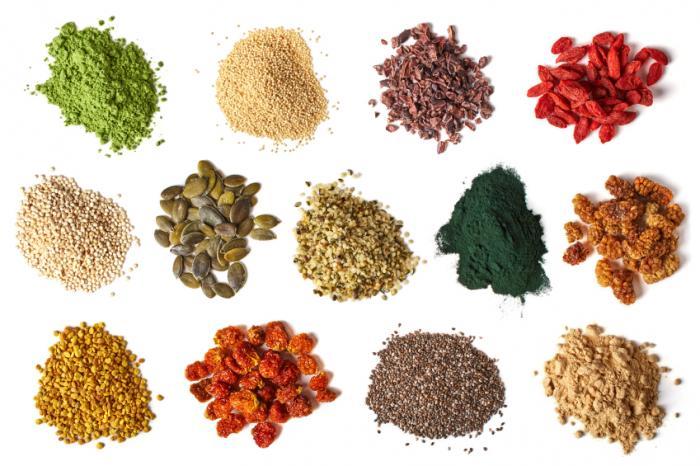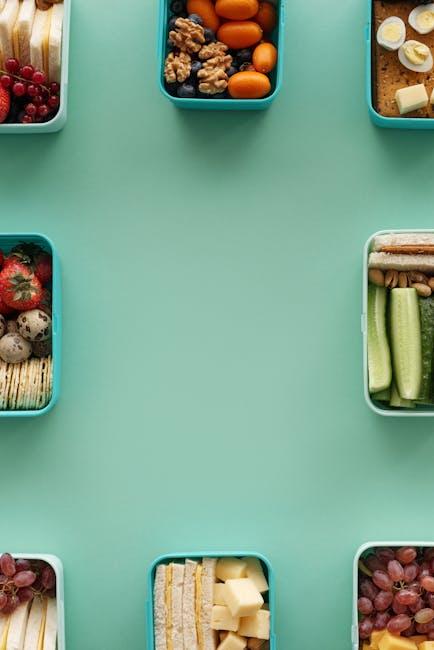In today’s fast-paced world, maintaining a healthy lifestyle can often feel like a daunting challenge, especially when it comes to meal preparation. However, achieving your weight loss goals doesn’t have to mean sacrificing time or flavor. Welcome to your ultimate guide to the best recipes for quick, healthy weight loss meals. This article will equip you with a collection of delicious, nutrient-packed recipes that are not only easy to prepare but also designed to support your journey towards a healthier you. Whether you’re a busy professional, a parent on the go, or simply someone looking to improve your eating habits, these recipes are crafted to fit seamlessly into your lifestyle. Get ready to discover meals that are as satisfying as they are slimming, empowering you to take control of your health with confidence and ease.
Understanding Nutritional Balance for Effective Weight Loss
Achieving a harmonious nutritional balance is essential for effective weight loss, as it ensures that your body receives all the necessary nutrients while maintaining a calorie deficit. A well-rounded meal should include a mix of macronutrients—proteins, carbohydrates, and fats—to sustain energy levels and promote satiety. Here’s how you can craft meals that not only support weight loss but also nourish your body:
- Protein Power: Incorporate lean sources such as chicken breast, tofu, or legumes to help build and repair tissues while keeping you full longer.
- Complex Carbohydrates: Opt for whole grains like quinoa, brown rice, or oats, which provide sustained energy and aid in digestion.
- Healthy Fats: Include avocados, nuts, or olive oil to support brain function and absorb fat-soluble vitamins.
- Fiber-Rich Vegetables: Load up on greens like spinach, kale, and broccoli to add volume and essential vitamins without extra calories.
By focusing on these key components, you can create meals that are not only satisfying and flavorful but also aligned with your weight loss goals. Remember, consistency is key, and understanding the balance of nutrients can make your journey both effective and enjoyable.

Incorporating Superfoods for Maximum Health Benefits
Superfoods are nutrient-dense ingredients that can significantly boost the nutritional value of your meals, aiding in quick and healthy weight loss. By incorporating these powerhouse foods into your daily diet, you can enhance your overall well-being while shedding those extra pounds. Here are some versatile superfoods that you should consider adding to your recipes:
- Kale: Rich in vitamins A, K, and C, kale is a low-calorie vegetable that can be easily integrated into salads, smoothies, or stir-fries.
- Chia Seeds: These tiny seeds are packed with omega-3 fatty acids, fiber, and protein, making them a perfect addition to your morning oatmeal or yogurt.
- Quinoa: A complete protein source, quinoa is a fantastic alternative to rice and can be used in salads, soups, or as a side dish.
- Blueberries: Known for their antioxidant properties, blueberries are a delicious way to sweeten your breakfast bowls or snack on during the day.
- Avocado: With healthy fats and fiber, avocado can be spread on whole-grain toast or added to salads for a creamy texture.
By incorporating these superfoods into your diet, you can create meals that not only support weight loss but also improve your overall health. Experiment with different combinations to find what suits your taste buds and lifestyle best.

Crafting Quick Meals Without Compromising on Taste
In today’s fast-paced world, creating meals that are both quick and delicious is an art. The key is to focus on nutrient-dense ingredients that cook swiftly and blend harmoniously. Here are some foolproof strategies to craft such meals effortlessly:
- Embrace Sheet Pan Dinners: Combine lean proteins like chicken breast or salmon with a medley of seasonal vegetables. Drizzle with olive oil, sprinkle with your favorite herbs, and roast at 400°F for about 20 minutes. The result? A mouthwatering meal with minimal cleanup.
- Master the Stir-Fry: A stir-fry is a versatile way to pack in nutrients. Sauté a mix of colorful vegetables such as bell peppers, broccoli, and snap peas with tofu or shrimp. Use a splash of soy sauce or teriyaki for flavor, and serve over a bed of quinoa or brown rice for a filling, balanced dish.
- Quick Soups and Stews: Opt for soups that require less than 30 minutes to prepare. Use vegetable broth as a base, add legumes like lentils or chickpeas, and toss in kale or spinach for a nutrient boost. These can be hearty yet light, perfect for a nutritious meal.
By utilizing these methods, you can enjoy meals that are not only speedy to prepare but also rich in flavor and nutrition. Transform your kitchen into a hub of quick, healthy culinary delights without ever feeling rushed.

Smart Portion Control Techniques for Sustainable Weight Loss
Mastering the art of portion control can transform your weight loss journey, turning it into a sustainable lifestyle. Start by familiarizing yourself with appropriate serving sizes. Use smaller plates to trick your brain into feeling satisfied with less food, and make use of measuring cups or a food scale to ensure accuracy. Mindful eating is another powerful tool; savor each bite, eat slowly, and listen to your body’s hunger cues. This practice helps prevent overeating by allowing your body time to signal fullness.
- Divide your plate: Allocate half for vegetables, a quarter for lean protein, and the remaining quarter for whole grains.
- Batch cook and pre-portion: Prepare meals in advance and store them in individual containers to avoid second helpings.
- Opt for nutrient-dense foods: Foods high in fiber and protein can keep you fuller longer, reducing the temptation to snack between meals.
By implementing these smart techniques, you’ll find that portion control is not about restriction but about balance and nourishment. This method not only aids in weight loss but also promotes a healthier relationship with food.
